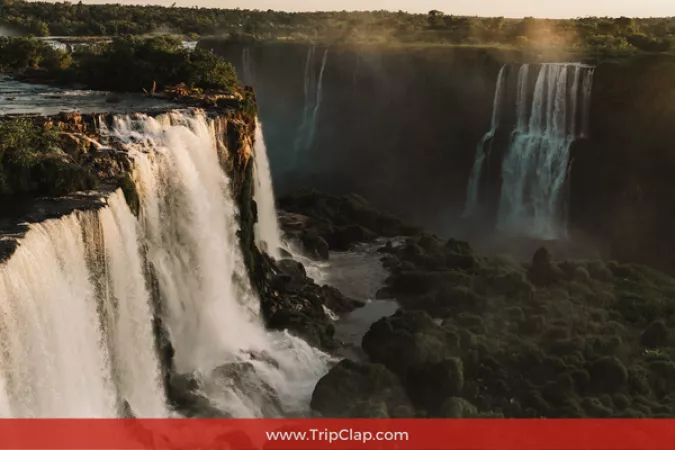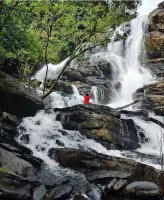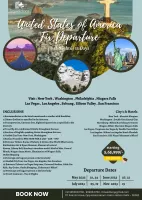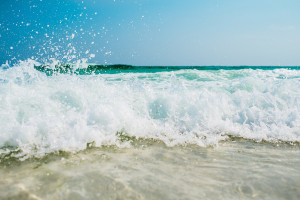
Thirparappu Falls
Duration
1 to 1 Days
1 to 1 Days
Best time to visit
Jun-Sep
Jun-Sep
Theme
Waterfront
Waterfront
Thirparappu Falls Travel Guide
Thirparappu Falls is a stunning waterfall located in the Kanyakumari district of Tamil Nadu, India. This natural wonder is not just a sight to behold but also holds historical significance, being a popular tourist destination for both locals and travelers. The falls are surrounded by lush greenery, adding to its charm and making it a perfect spot for nature lovers.Top Attractions in Thirparappu Falls
- Marvel at the majestic Thirparappu Falls
- Explore the nearby Mahadeva Temple
- Enjoy a picnic by the riverside
- Visit the quaint village of Thirparappu
Thirparappu Falls is Famous for
Its cascading waters and serene surroundings make Thirparappu Falls famous for its natural beauty.Top Attractions in Thirparappu Falls
- Thirparappu Falls
- Mahadeva Temple
- Riverside Picnic
- Village of Thirparappu
What's Great about Travelling to Thirparappu Falls?
- Perfect for nature lovers
- Ideal for a relaxing getaway
- Great for photography enthusiasts
What's Not So Great about Travelling to Thirparappu Falls?
- May not be suitable for adventure seekers
- Limited accommodation options
- Remote location
Travel Tips for Thirparappu Falls
- Check weather conditions before visiting
- Carry insect repellent
- Respect the local culture and customs
Important Thirparappu Falls trip information
- Ideal Duration: 1-2 days
- Best Time to Visit: November to February
- Nearby Airports and Railway Stations: Trivandrum International Airport and Nagercoil Railway Station
Per Person
8,750
*EXCLUDING APPLICABLE TAXES 4.5 Ratings
( 31 Reviews )
( 31 Reviews )
Per Person
5,65,999
*EXCLUDING APPLICABLE TAXES Per Person
67,529
*EXCLUDING APPLICABLE TAXES 5.0 Ratings
( 393 Reviews )
( 393 Reviews )
FAQ's on Thirparappu Falls
Q1: What is the best time to visit Thirparappu Falls?
The best time to visit Thirparappu Falls is during the monsoon season from June to September when the waterfall is at its fullest. The weather is pleasant during this time, making it ideal for enjoying the natural beauty of the falls. However, for a more relaxed and crowd-free experience, visiting during the shoulder seasons of October to November or February to May is recommended.
Q2: Do I need a visa to travel to Thirparappu Falls?
Thirparappu Falls is located in India, so international tourists will need a valid Indian visa to visit. There are different types of visas available, so it is advisable to check with the Indian embassy or consulate in your country for specific requirements. Travelers from certain countries may be eligible for e-Visas or visa on arrival, but it's essential to confirm this before planning your trip.
Q3: What are the must-visit attractions in Thirparappu Falls?
Thirparappu Falls is the main attraction, offering a stunning cascade of water amidst lush greenery. Visitors can also explore the nearby Mahadeva Temple, known for its intricate architecture and religious significance. The Pechiparai Reservoir and Mathur Hanging Trough are other popular spots to visit for nature lovers. The Kanyakumari Beach, Vivekananda Rock Memorial, and Padmanabhapuram Palace are within driving distance and worth exploring as well.
Q4: Is Thirparappu Falls a safe place to travel?
Thirparappu Falls is generally safe for tourists, but like any natural attraction, visitors should exercise caution, especially around the waterfalls. It's advisable to follow safety signs, avoid swimming in restricted areas, and be mindful of slippery rocks. As with any travel destination, it's recommended to keep valuables secure and be aware of your surroundings. Traveling with a guide or in a group can enhance safety, especially if you plan to trek or explore the surrounding areas.
Q5: What is the local currency in Thirparappu Falls and can I use credit cards?
The local currency in Thirparappu Falls is the Indian Rupee (INR). While credit cards are accepted at some hotels, restaurants, and larger stores, it is advisable to carry cash for smaller establishments and local markets. ATMs are available in nearby towns, but it's recommended to withdraw cash before heading to remote areas. Inform your bank of your travel plans to ensure your cards work seamlessly during your stay.
Q6: What is the local cuisine like in Thirparappu Falls?
The local cuisine in Thirparappu Falls offers a mix of traditional South Indian dishes with a focus on rice, lentils, and seafood. Must-try dishes include dosas, idlis, appams, and seafood curries prepared with local spices and coconut milk. Vegetarian options are widely available, and you can savor authentic flavors at local eateries and street food stalls. Be sure to try the regional specialty of banana chips and fresh coconut water. For those with dietary restrictions, there are plenty of options available, including vegan and gluten-free dishes.
Q7: What transportation options are available in Thirparappu Falls?
Transportation options in Thirparappu Falls include buses, taxis, and rental vehicles for getting around. Local buses connect nearby towns and attractions, offering an affordable way to travel within the region. Taxis and auto-rickshaws are available for hire for more flexible and convenient travel. Renting a car or hiring a driver is a popular choice for exploring the area at your own pace. Additionally, bicycles and motorcycles can be rented for eco-friendly and adventurous sightseeing. It's recommended to plan your transportation in advance, especially if you intend to visit multiple attractions in and around Thirparappu Falls.
Q8: Are there any cultural norms or etiquette I should be aware of when visiting Thirparappu Falls?
When visiting Thirparappu Falls, it's important to respect the local customs and traditions. Modest clothing is recommended when visiting religious sites like temples, and it's customary to remove your shoes before entering certain places of worship. Greeting locals with a smile and a "Namaste" is a sign of respect. Avoid public displays of affection and be mindful of local sensitivities. When dining, it's polite to eat with your right hand and try local dishes with an open mind. Bargaining is common in markets, but do so respectfully. Taking photographs of people without permission may be considered intrusive, so always ask first. By being aware of and respecting the cultural norms, you can have a more enriching experience in Thirparappu Falls.
Q9: I am a travel agent. How can I buy travel leads of Thirparappu Falls?
Register yourself as a travel agent at agents.tripclap.com and then you can buy travel leads to Thirparappu Falls once your account is approved. For more details contact our support team at +91-8069186564 or support@tripclap.com



